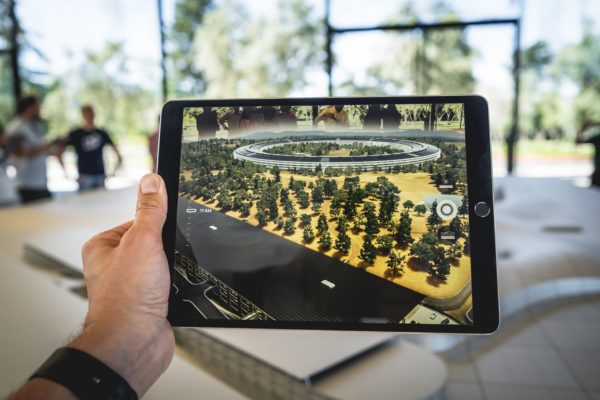Deakin’s world-leading battery researchers have discovered how sodium can help to create a fairer and more sustainable energy future.
Populations across the globe are likely to see a transition from lithium to sodium batteries in homes, the evolving smart-grid, manufacturing and many other purposes over the next 10 to 20 years, thanks to ground-breaking research being undertaken by energy experts at Deakin University.
Led by BatTRI-Hub Director, Professor Maria Forsyth, the Deakin team has just achieved a cover feature in the world’s most prestigious energy materials journal, “Advanced Energy Materials.”
The team’s latest findings are being presented as part of a specially curated edition of the renowned journal, co-edited by Professor Forsyth with international experts Professors Teofilo Rojo, Yong-Sheng Hu and Xiaolin Li.
The special edition was released on June 15 and features 16 individual perspectives on different aspects of sodium-ion battery research.
[testimonial_text]This recognition is a tremendous acknowledgement of the efforts of our team and the ground-breaking nature of our work.[/testimonial_text]
[testimonial_picture name=”Professor Maria Forsyth” details=”BatTRI-Hub Director”]
 [/testimonial_picture]
[/testimonial_picture]“Electrolytes composed entirely of salts, namely, ionic liquid solvents, paired with a target ion salt, have been studied extensively within lithium batteries. Scientists around the world are now interested in the potential of advanced electrolytes in sodium chemistries. Our work is supporting the development of this technology so industry and consumers can make the transition to a much more sustainable energy source in the not-too-distant future.”
In 2016 Deakin hosted the world’s leading scientists on sodium battery research, with the Third International Conference on Sodium Batteries held in Geelong.
Alfred Deakin Fellow Dr Andrew Basile, co-author of the paper, explained that the potential benefits of sodium, compared to lithium, as a sustainable global source of energy are huge.
“Sodium is readily available and therefore potentially cheaper to use than lithium. You can harvest sodium almost anywhere – the soil, the ocean or as a by-product of desalination,” said Dr Basile.
“Sodium is considered safer than lithium technologies, affordable and, because it is plentiful, it is equitable. In contrast, lithium is expensive and rare – only being available in a few parts of the world, such as parts of Australia and China. This means that lithium is not an option for many developing countries.”
Entitled “Ionic Liquids and Organic Ionic Plastic Crystals: Advanced Electrolytes for Safer High Performance Sodium Energy Storage Technologies,” the paper outlines the Deakin team’s progress in developing new electrolytes that will lead to the creation of much less volatile and less reactive sodium batteries than previous technologies could achieve.
An ionic liquid is a salt in liquid state, meaning that it can be liquid below 100 °C, or even at room temperature.

“Sodium? Yes Sir. Mixed with mercury, it forms an amalgam that takes the place of zinc in Bunzen elements. Mercury never wears out. Sodium alone is consumed, and the sea furnishes it to me. I will tell you, moreover, that sodium batteries must be considered as the most energetic, and that their electro-motive force is double that of zinc batteries.”
Jules Verne
Vingt mille lieues sous les mers Hetzel, Paris 1890
Dr Basile predicts sodium batteries will become available within niche applications, such as portable battery packs for phones, within the next five to ten years. He explained that their potential was first explored during the ‘70s and ‘80s, but the “breakthrough” success of the Sony lithium ion battery that hit the market in 1991 brought a hiatus to most sodium battery research for the next 20 years.
“Also, in those days, ionic liquids needed to be at much higher temperatures, which made research more expensive and sodium less attractive as an option for battery research,” he said.
“Our research at Deakin is attracting interest from scientists around the world because we have been able to reduce the reactivity of ionic liquids and achieve excellent thermal stability inside the battery. This will make sodium batteries much safer – and unlikely to catch on fire – and we can work on them at room temperature.”
Co-director of BatTRI-hub, Associate Professor Patrick Howlett, noted that the path of the development of lithium batteries has given scientists and manufacturers a road map for sodium batteries.
“With similar investment, scientists will be able to achieve commercial applications even more quickly than with lithium batteries,” he said.
“The challenge will be to achieve the same energy output with sodium as with lithium. There is 1000 times more sodium in the world than lithium, but it is not as energy dense as lithium, which means ionic liquids will play a key role in achieving ideal properties. Until now, the cost of producing ionic liquids was prohibitive, but industries world-wide are finding cheaper ways to produce them.”
Deakin researchers will also feed their sodium research into the new microgrid that is being established on the Waurn Ponds campus over the next 12-18 months.
Read more:
- “Ionic Liquids and Organic Ionic Plastic Crystals: Advanced Electrolytes for Safer High Performance Sodium Energy Storage Technologies,” “Advanced Energy Materials.”
Battery Technology Research and Innovation Hub (BatTRI-Hub)
BatTRI-Hub, a joint venture with CSIRO, was established at Deakin’s Institute for Frontier Materials in 2016. It aims to develop “beyond lithium-ion” battery technologies – and underpin a new Australian industry. BatTRI-Hub is helping to leverage opportunities for industries across the full energy value chain.
Published by Deakin Research on 7 May 2018



